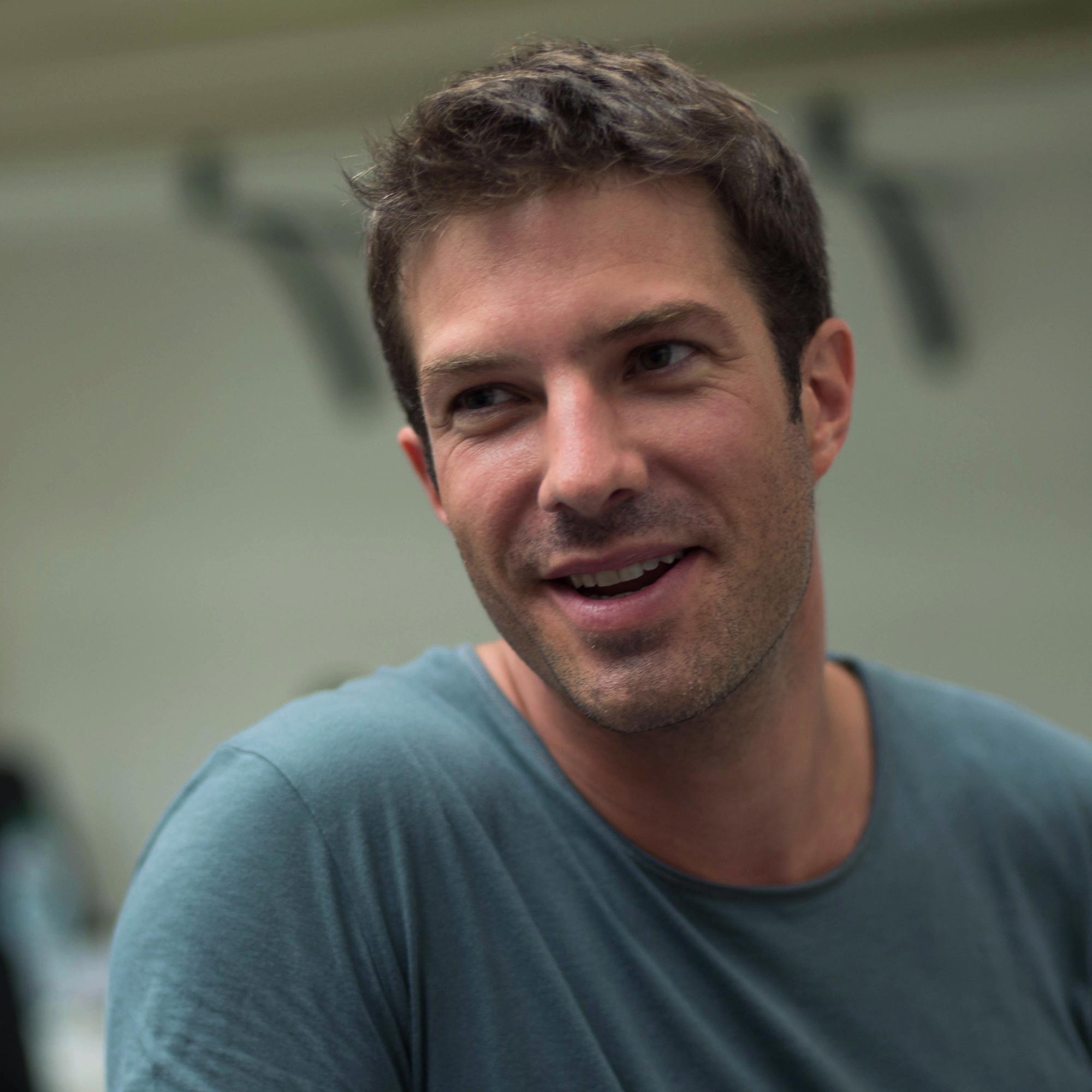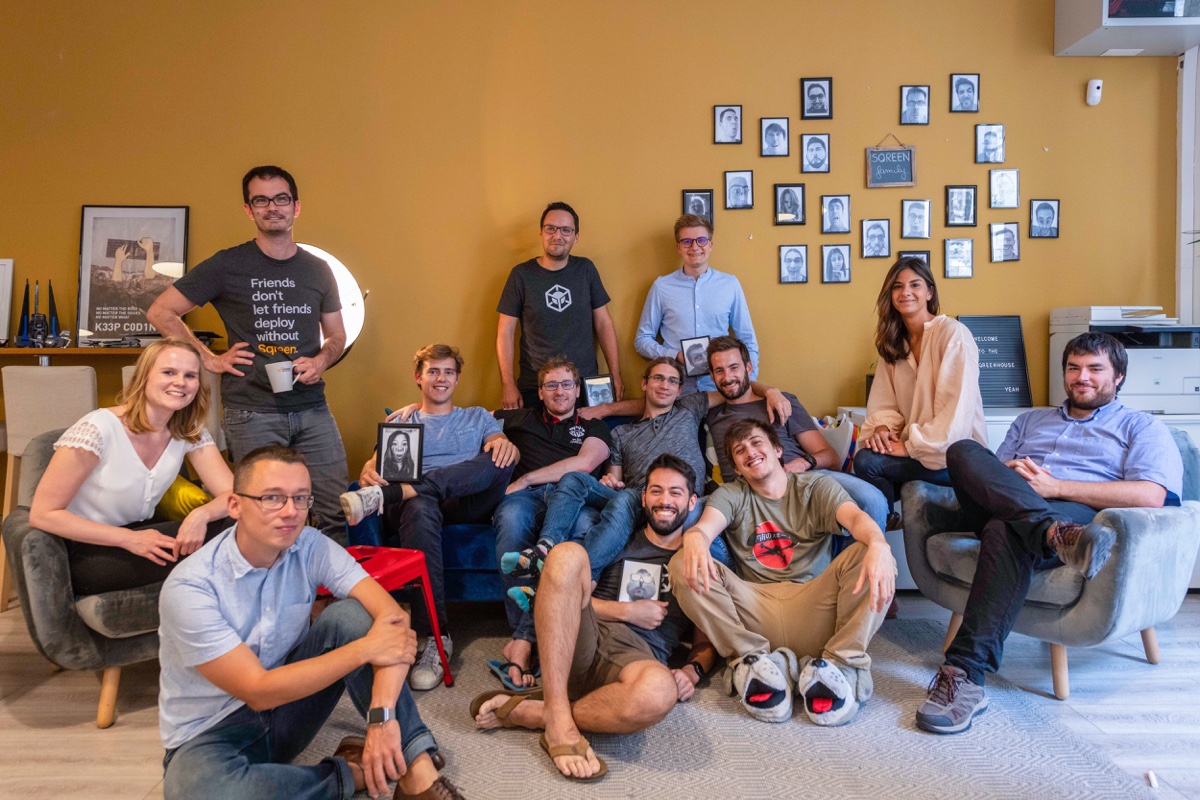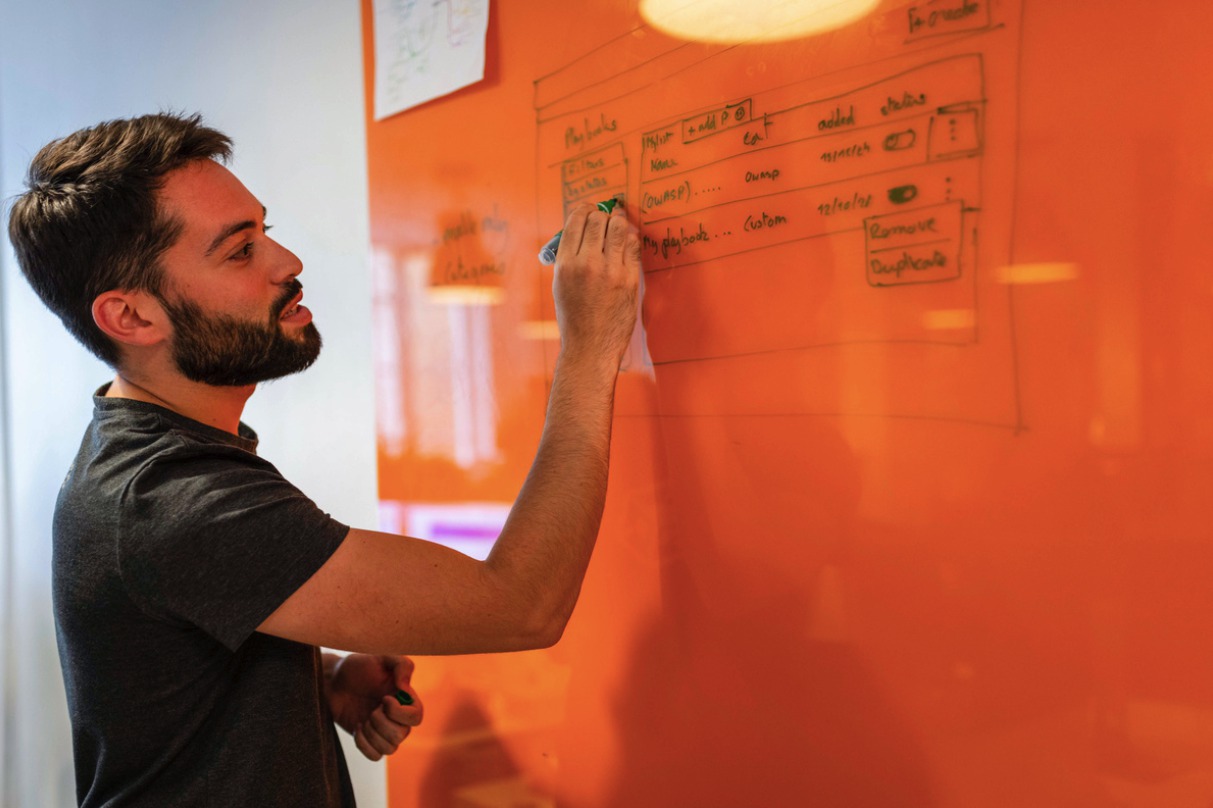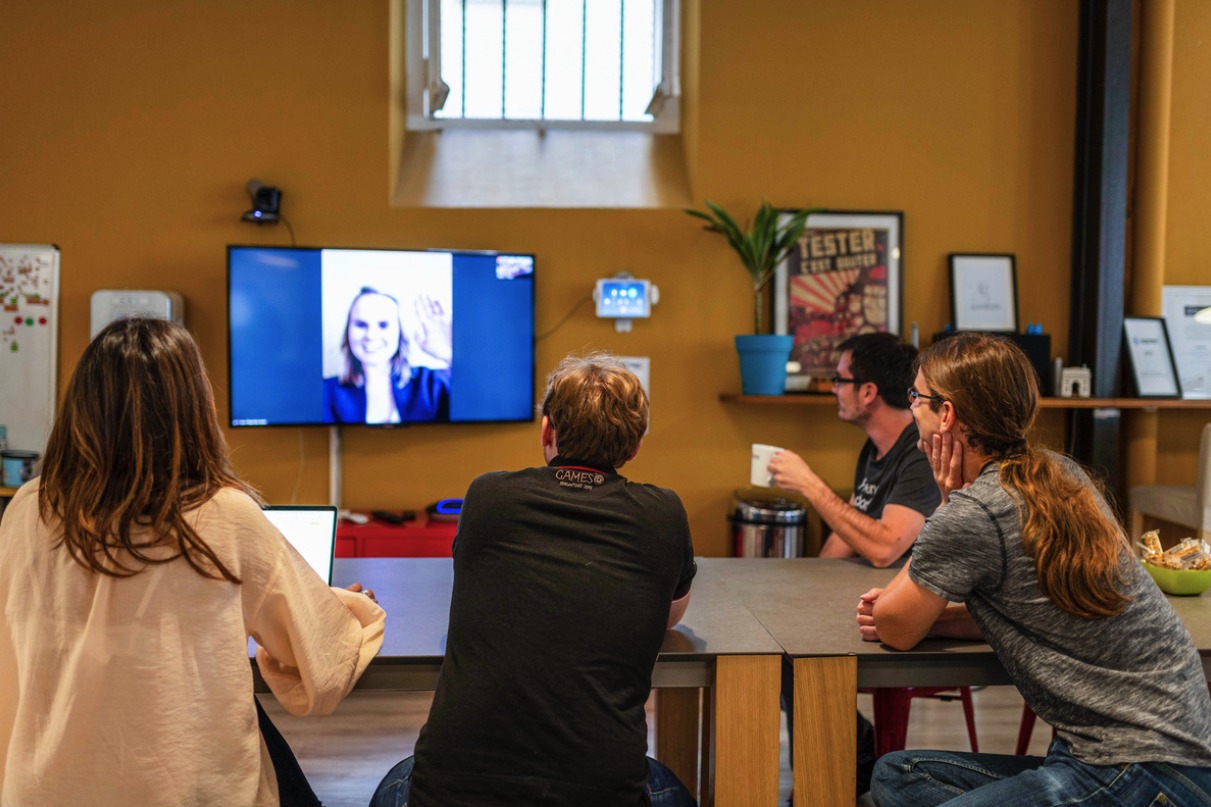A recipe for a successful distributed team from Pierre Betouin, CEO of Sqreen
Sqreen is the first security monitoring and protection platform that automatically prevents attacks before they impact your business. In his interview with YouTeam Co-founder Yurij Riphyak, Pierre shares the story of starting the company & building up the working process between remote teams from San Francisco and Paris.
If you want to know how to properly relocate people and build up a remote team from scratch, keep reading this amazing story.

Yurij: Pierre, could you please start with a little story of how it all began with Sqreen and how you ended up having a distributed team?
Pierre: It started when I was at Apple. I worked there for ten years being in charge of the Red team. That’s the team which performs the offensive security assessments of the products to proactively find vulnerabilities and anticipate external attacks. At that time, we were basically helping development teams to fix the code.
One part of my team – the offensive security unit – was located in Paris, while the other was based in Cupertino – US, California. I was flying back and forth between France and Cupertino and I could see engineering teams in the US and my engineering team in Paris. So I’ve actually lived with that experience since 2005 – when I joined Apple.
In Europe, we were hiring amazing engineers pretty fast. However, the US market was completely different.
In Europe, we were hiring amazing engineers pretty fast. Their commitment resonated with our mission and project really well. However, the US market was pretty different. Thanks to the companies like Google and Facebook, the competition was very tough out there, even if you’re Apple!
In Europe, working for a company like Apple was an amazing opportunity. That’s why you could give everything to such a company. But that was not the case in the US, where the state of the market meant that people were not as committed as they were in Europe. For this reason, operating in Europe is clearly an unfair advantage for tech companies when it comes to engineering.
So when we started Sqreen, we knew that the first thing we needed to do was to focus on engineering, not on sales and marketing, because we needed to build a product first.
Yurij: Your team of 20 people was located in Europe at that time?
Pierre: Absolutely. My team was based in Paris at the beginning.
Yurij: And the team was co-located all in one office?
Pierre: Yes, in one office. Don’t get me wrong, I think it’s great if you want to build a remote team from the start, but it requires a lot of extra effort and you have to be more careful with the communication.
Remote working is great, but it comes with complexity if you want to make it work well. In the early stages of Sqreen, we wanted to set the right culture and carefully onboard new employees – it seemed more appropriate to do this in-person. That’s what worked for us. We had to choose our battles.

Yurij: But now your team is distributed?
Pierre: Now it is. But back in the early days, we needed a core foundation, to be able to jump on whiteboards at any time, to work on the architecture together, to hang out after work, and that’s what we did. Today, we are distributed.
Yurij: What was the threshold for you? How big were you at the time when you hired your first remote employee beyond the core team?
Pierre: Not that big. We hired one expert who was based in Portugal and he was absolutely amazing. Things that he worked on were very specific and narrow, and he didn’t have to interact with 5 or 6 other engineers on a daily basis.
Yurij: Can you describe the structure of your engineering team at the moment?
Pierre: 90% of the engineering & product teams are located in Paris, with 2-3 people working remotely. Most of our growth & operations teams are based in San Francisco now.
Yurij: So you have a 9-hour difference between the US and France. How do you manage this time difference?
Pierre: Our head of product is based in Paris, so he is very close to the engineering team. We spend a lot of time together when I fly to France, designing some early features and versions, as we have a lot of data points from customers.
Regular general team meetings allow us to define where we should drive the overall product strategy.

Speaking of our engineers, they are also very involved in the product growth process and are well aware of each feature’s goal, so they are quite autonomous. That’s why we don’t need a constant daily interaction between SF and Paris.
Yurij: Because your main market is in the US, right?
Pierre: Absolutely. We have a team in Paris which is implementing, iterating, adjusting the product. Afterward, we push it in the US, as we need to get feedback.
Y Combinator was the first real experiment for us. At the beginning, remote work seemed to be a great challenge.
It is important to create a motion where you flow, use the feedback, generate things, and flow back. We ensure that all our engineers sit in on customer calls very often and conduct customer interviews.
Yurij: I see, so it works in cycles. And how long does one cycle take? Two weeks?
Pierre: No, they are very short. We love fast iterations and even two weeks without shipping feels too long.
Y Combinator was a very good way to test this process better, as we weren’t distributed back then. It was the first real experiment for us. It wasn’t perfect. We had friction everywhere, but we could see the energy, which is something very important.
We like to make hard things simple at Sqreen and our processes reflect that.
Here in the US, you get so much energy because you push new things and get feedback on them quickly which allows you to identify whether people are excited about what you do or not. If you don’t manage to transfer that energy to your engineering office in Europe, it can lead to a more passive team who won’t ensure great results.
Our team members from Paris arrive in SF jetlagged, but after two weeks spent in this environment they go back pumped up and super motivated. So you need to be able to transfer this energy between your locations.

Yurij: Great! Ok, so what made you decide to hire this first remote team member in Portugal? Why not elsewhere in France?
Pierre: It was about specific skills and unique expertise that we were looking for. And opportunity of course.
I think that Gustavo was the only one in Europe capable of doing low-level instrumentation and dynamic instrumentation. Today we also have people who come from Spain, Switzerland, Australia, United States, Latvia, etc. We arrange flights, sponsor visas, and take care of all the logistics.
Yurij: So you relocate them?
Pierre: Yes, and our team is super diverse as a result.
In the beginning, relocation seems to be more of a disadvantage, it can feel like a lot of hassle. But now we realize that it is actually a great opportunity which is very attractive for people.
We also have built a very nice playbook on how to relocate people. Because obviously when you arrive in a new country, you don’t know what to do and where to start with basic things like setting up your bank account. But with our playbook, we can set everything on track in just a few weeks.
Our culture makes no difference between freelancers and full-time team members. We are all in this together.
Yurij: So your playbook is like a document for onboarding a new member of the engineering team. It is very interesting as not everyone has something like that. We at YouTeam wanted to create something similar, but so far it’s still more like throwing someone into the water if you want to teach them to swim and then just helping ad hoc.
Pierre: Yeah, I know. Alison, our head of talent is open sourcing many of our internal processes.
The idea is to streamline information which will help to manage administrative stuff. For instance, different documents or key information that you need to send to an employee before they decide to relocate.
We like to make hard things simple at Sqreen and our processes reflect that.
Yurij: Do you work with freelancers as well?
Pierre: We do, but just with a few. There are three reasons why we would turn to freelancers.
- Exceptional expertise. Sometimes we need to contract with someone who is the only expert in the field (e.g. low-level PHP dynamic instrumentations or Java bytecode instrumentations). When this happens, freelance is a lifesaver.
- The overflow. It occurs when we have time limitations and need to ship in one month. And we know that even if we work 24 hours a day, we won’t be able to make it.
- The atmosphere. Sometimes we love to work with some freelancers, as it can be a great way to start work together. And if it fits well, we can perhaps continue to work full-time.
Yurij: How do you know that this freelancer is the right person for your team? What are you looking for when interviewing those candidates?
Pierre: Our culture makes no difference between freelancers and full-time team members. We are all in this together.
We don’t want to have two categories of people as it doesn’t make any sense. What is important is that our freelancers are passionate about what they do.
We have a very well-organized hiring process. We don’t talk too much about cultural fit. It’s more about cultural improvement.
We call our freelancers “Sqreeners” too, and they have access to the same amount of information as our in-house employees. They do team meetings and social events with us as well.

Yurij: Do you have any tricky questions in your interview process, anything for critical or analytical thinking?
Pierre: We share some common values with the people we work with, but in fact, we all are different. We have a set of questions that help us to evaluate whether a candidate is compatible with our culture.
We have a very well-organized hiring process. We don’t talk too much about cultural fit. It’s more about cultural improvement.
For example, being transparent and willing to share is key for us. We know what we’re looking for in that respect, so it’s easy to see if the candidates are a good fit. Besides that, we have a set of data points that help us evaluate engineering candidates comprehensively.
- Reasoning. We have some logical tests in order to check the reasoning of the candidate and if he or she wants to dig into problems.
- Rational logic. Then we have some tests to identify rational logic – how a candidate would solve a problem and what would be the algorithm they’d use.
- Coding style. We adapt our coding interviews according to the position where the candidate is evaluated on the coding style and pure knowledge of, for example, Ruby or Python.
- Matrix. Afterwards, we have a kind of assessment matrix where all of the Sqreeners who participated in interviews are involved, so we can see whether we are enthusiastic or not about the candidate.
- Group interview. We usually try to have lunch with every candidate or at least a coffee with the entire team. This way, almost everyone in the company gets to decide if the candidate is a good fit. And of course, vice versa.
Yurij: If you weren’t 100% occupied with Sqreen, what would you probably build? Do you have some big idea to work on if you were to exit with the company?
Pierre: You may think that there are opportunities everywhere, but a lot of companies have already tried them. So it’s a wrong opportunity and you don’t have enough data points on the problem.
It is always better to switch from the “I want to find problems” into “I want to solve problems” mindset.
First of all, it seems wrong to me when one needs an idea to start a company. When you’re constantly looking for new problems, you can find them everywhere. So it is better to switch from the “I want to find problems” into “I want to solve problems” mindset.
If I were to start a new company, I would do something in a space I know well. I’d focus on speed and iteration, and I would start a company where I would solve a problem that I had encountered every day. And I would try to project the point and solve the problem that is short on technology and time.
But if you try to look far to know where the technology and world are going, then I would try to solve something that requires a solution for 10 or 15 years. It’s crucial to predict where the world is going if you want to be the leader in technology.

Yurij: Live in the future and build what’s missing.
Pierre: Yeah, absolutely. It’s 2019 now, the world has changed and you need to try to forecast where the world is going in 5 or 10 years. So that you know what you are starting to build can become a huge company in this period of time.
Yurij: Yeah, totally. Cool, thank you very much!
This interview is just a tiny part of our huge project – a series of founder stories shared by YouTeam. Enjoy your reading and keep coming back for more opinions from the world’s most successful tech founders!






